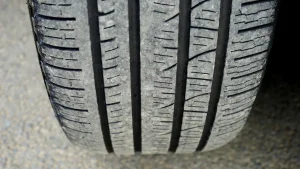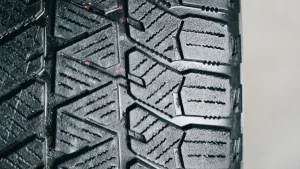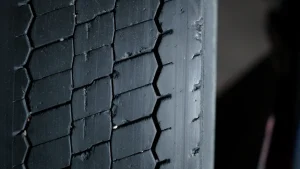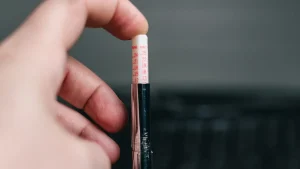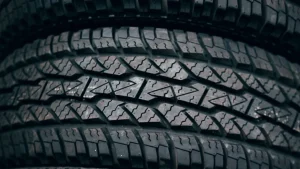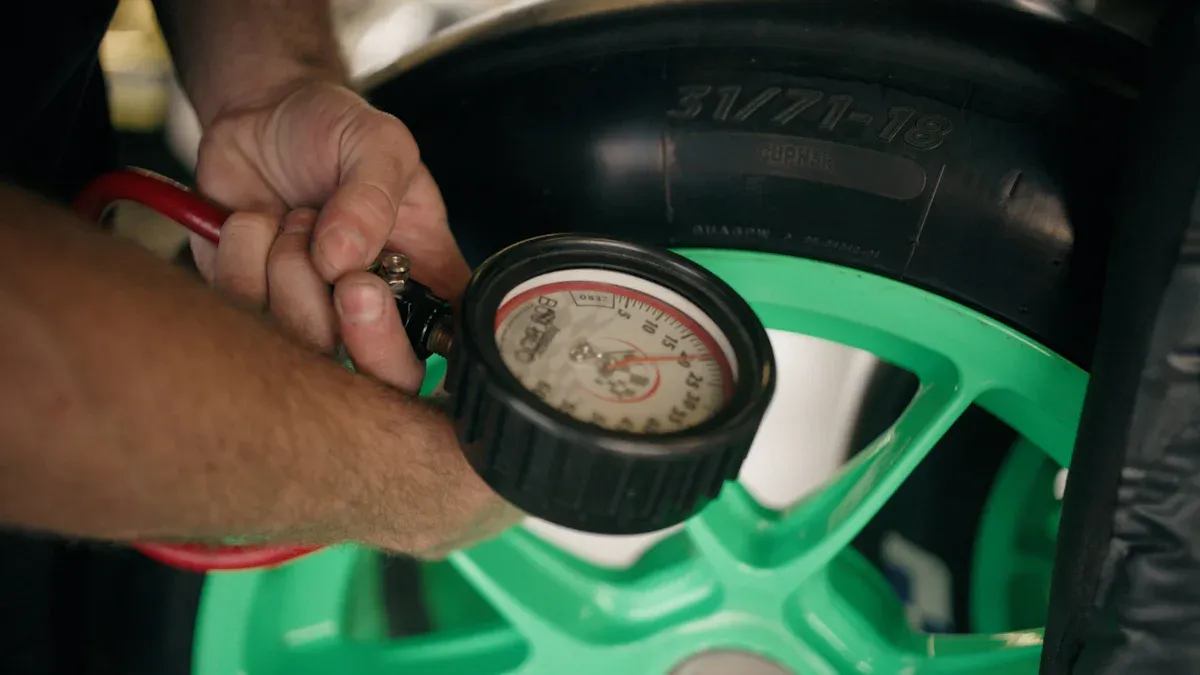
Tire tread depth plays a crucial role in your safety and vehicle performance. As tread wears down, accident rates can skyrocket—from just 2.4% with full tread to a staggering 26% when worn out. You can easily measure tread depth using methods like the penny test or a tread depth gauge. These tools make checking tread depth tires simple and effective.
重要なポイント
Check your tire tread depth at least once a month. This helps keep you safe and your vehicle running well.
Use the penny or quarter test to check tread depth quickly. If you can see all of Lincoln’s or Washington’s head, you need new tires.
Buy a tread depth gauge for the best measurement. It helps you find problems like uneven wear and keeps your tires safe.
タイヤのトレッド深さを確認する方法
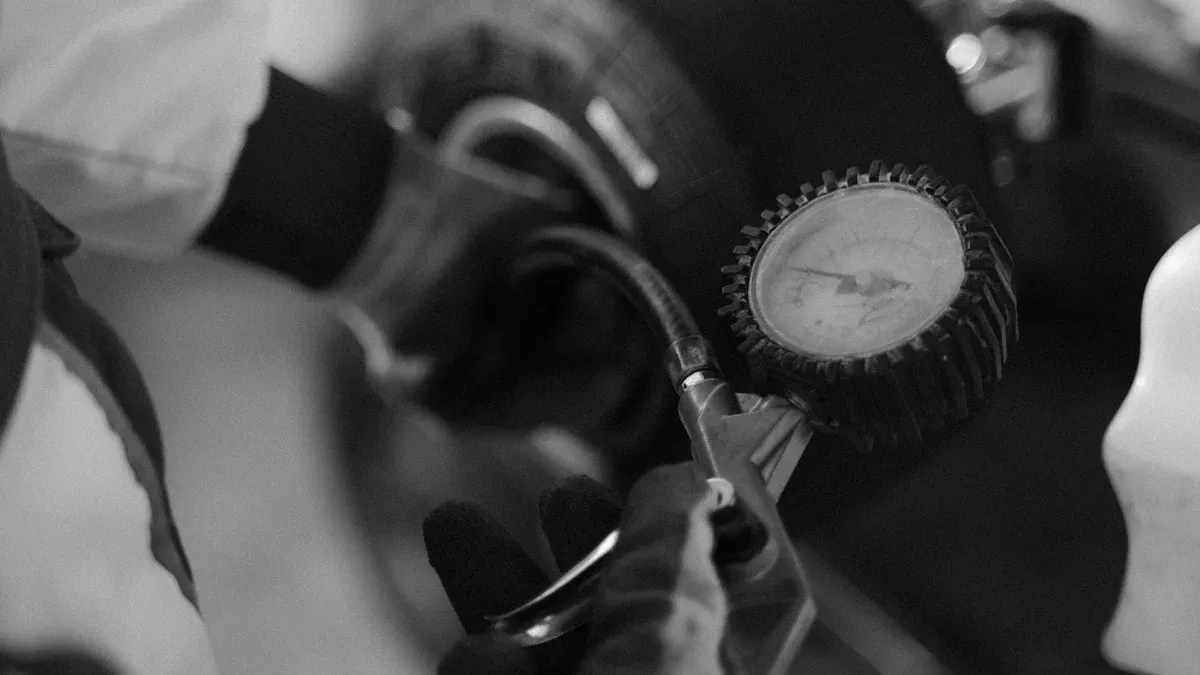
When it comes to checking tire tread depth, you have several easy methods at your disposal. Each method has its own advantages, so let’s dive into them!
ペニーテスト
The penny test is a classic and straightforward way to check tire tread depth. Here’s how you do it:
ペニーを手に取り、リンカーンの頭が下向きになるように持ちます。
Insert the penny into a tread groove of your tire.
Look at how much of Lincoln’s head is visible:
If the tread covers Lincoln’s forehead, your tire has enough tread depth.
If you can see all of Lincoln’s head, your tread is worn down to a minimum depth of 2/32インチ. This means it’s time to replace your tires.
ヒント: While the penny test is quick, it may not always signal the need for replacement soon enough. For a more reliable assessment, consider the quarter test.
クォーターテスト
The quarter test is similar to the penny test but offers a more precise measurement. Here’s how to perform it:
Take a quarter and hold it with George Washington’s head facing down.
Insert the quarter into a tread groove.
Check how much of Washington’s head is visible:
If the tread covers part of Washington’s head, your tread depth is still good.
If you can see the entire head, your tread depth is below 4/32 of an inch, indicating that it’s time for new tires.
Test Type | Detection Depth | Reliability | 安全性への影響 |
|---|---|---|---|
ペニーテスト | 2/32インチ | Less reliable | May not signal replacement soon enough |
クォーターテスト | 4/32インチ | More reliable | Signals need for replacement sooner, enhancing safety |
トレッド深さ計の使い方
For the most accurate measurement, you might want to invest in a tread depth gauge. Here’s how to use one:
Insert the probe into a tread groove.
Press the base flat against the tire surface.
Read the depth in 32nds of an inch.
Using a tread depth gauge gives you precise measurements and can help identify specific issues like uneven wear due to alignment problems. Unlike coin-based tests, a tread depth gauge can provide a clearer picture of your tire’s condition.
Specification | Value |
|---|---|
正確さ | ±0.02 mm |
Range | 0 to 25 mm |
Understanding Wear Indicator Bars
Modern tires often come equipped with wear indicator bars. These small raised marks are located at the lowest safety point of the tire tread. They serve as a visual cue for you to assess tread wear. Here’s how to check them:
Locate a tire wear bar on your tire.
Inspect if the wear bar is flush with the surrounding tread.
If it is flush, your tire has worn down to 2/32″, and you should replace it immediately.
Tire wear bars become visible as the tread wears down, indicating that your tread depth is approaching the dangerous level of 2/32 inches. When the bars are flush with the tread, it’s time to replace the tire.
Note: Tire wear bars are essential safety features built into modern tires, helping you easily monitor tread depth and know when it’s time for a replacement.
By regularly checking your tire tread depth using these methods, you can ensure your safety on the road and maintain optimal vehicle performance.
Importance of Tread Depth Tires
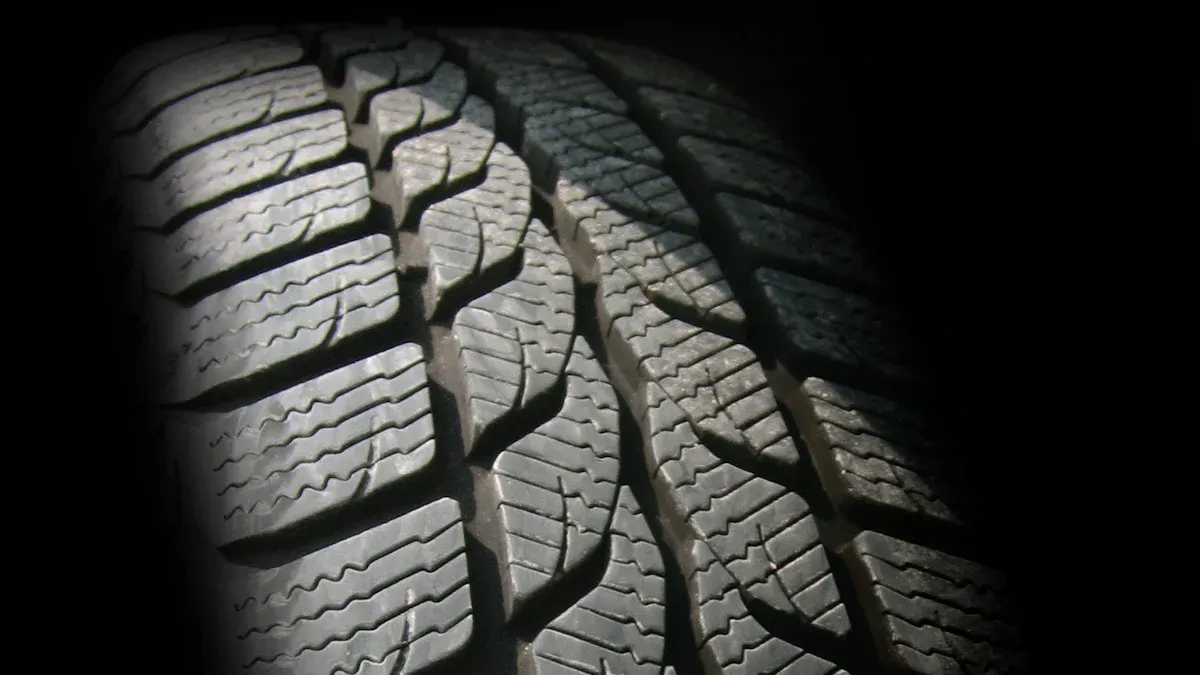
安全性への影響
Having the right tire tread depth is very important for your safety. When your tires have enough tread, they grip the road better, especially when it’s wet. Here’s why this is important:
Deeper treads improve grip on wet roads by pushing water away. This helps you stop faster, which is very important in emergencies.
Worn tires with low tread depth make it harder to stop quickly. Studies show that less tread means longer stopping distances. For example, if you go from 11/32″ to 1/32″, your braking power drops from 100% to about 53.3%. This can double how far you need to stop.
ヒント: Always check your tread depth tires often to stay safe!
Impact on Tire Performance
Tire tread depth affects how well your vehicle drives. Here are some important points:
Less tread depth means longer stopping distances. For instance, tires at 2/32″ need about 250 feet to stop, which is only 64% as good as new tires.
Worn tires can start to hydroplane at speeds as low as 40 mph, while new tires can handle up to 43-44 mph. This can make you lose control.
Cornering grip drops by 10-18% on wet roads with worn tires, making it harder to steer. This can make emergency moves more difficult and risky.
As tread depth gets lower, tires can’t push water away as well. This loss of grip can lead to hydroplaning, which is very dangerous in wet weather.
When to Seek Professional Help
You can check your tire tread depth at home, but some signs mean you should get professional help:
Punctures or Flat Spots: Punctures can cause slow leaks or sudden flats. Flat spots can make your ride uncomfortable.
Fluctuating Pressure: Quick changes in tire pressure might mean a slow leak or a valve stem issue.
Vibrations or Noise: Strange vibrations or sounds while driving can mean tire damage or imbalance.
Tread Wear: If your tread depth is 2/32 of an inch or less, you need new tires.
Age: Tires should be replaced every six to ten years, even if the tread looks okay, because they wear out over time.
Professional checks use special tools for better assessments. Mechanics can find problems that you might not see, making it safer. Regular maintenance helps tires wear evenly, which can make them last longer and keep you safe.
By knowing the importance of tread depth tires, you can make smart choices to stay safe on the road.
To sum it up, you can 各タイヤの複数の場所で in a few simple ways: the penny test, the quarter test, a tread depth gauge, and wear indicator bars. Checking your tires often is very important for your safety. It helps your tires grip better, stop faster, and lowers the chance of hydroplaning.
ヒント: Look at your tire tread depth 少なくとも月に一度 to keep your vehicle safe and running well!
Start today and keep an eye on your tires to make sure you have a smooth and safe ride.
よくある質問
安全運転のためには、少なくとも2/32インチの溝深さが必要です。ただし、多くの専門家は、特に濡れた条件下では、溝深さが4/32インチに達したらタイヤを交換することを推奨しています。
You should check your tire tread depth at least once a month to ensure safety and performance.
安全運転のための最小溝深さはどれくらいですか?
最も重要なのは、 minimum tread depth for safe driving is 2/32 of an inch. Below this, you should replace your tires.
Can I use any coin to measure tread depth?
Yes, you can use a penny or a quarter. Each coin provides a quick way to assess tread depth effectively.
その他の情報
Utilizing A Tire Tread Depth Gauge For Precise Measurements
Understanding Smart Tire Tread Depth Detectors And Their Functionality

